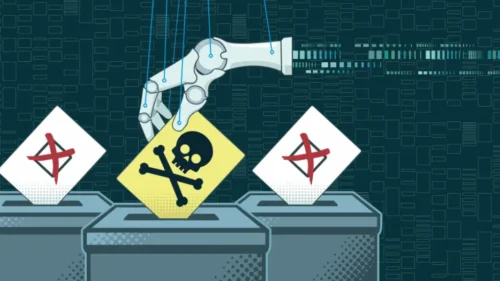In today’s rapidly shifting geopolitical landscape, national power is no longer measured solely by GDP or military force. Instead, it is increasingly defined by a nation’s capacity to develop, integrate and scale critical technologies. From artificial intelligence to biotechnology and semiconductors, these domains are no longer just engines of economic growth — they are geopolitical instruments, contested supply-chain battlegrounds and determinants of strategic sovereignty. The countries most likely to lead in this new era are those that align technological innovation with strategic integration and institutional coherence.
The Critical and Emerging Technologies Index (CETI) built and maintained by Harvard Kennedy School offers a new lens to measure this reality. Drawing from thousands of open-source and proprietary datasets, it benchmarks 25 countries across five sectors: AI, biotechnology, semiconductors, quantum and space. Its findings reveal not just which countries lead, but how power is shifting — and what that means for business, innovation and national strategy.
Techno-sovereignty and strategic business planning
In an age of weaponized interdependence, governments are asserting control over technology supply chains once thought global and apolitical. Export controls on semiconductor lithography, restrictions on cross-border AI models and pharmaceutical sovereignty policies are now routine. For multinational corporations, these moves blur the line between business strategy and foreign policy.
This convergence of technology and geopolitics is not new. In the 1970s, the US Central Intelligence Agency and West Germany’s BND secretly acquired Swiss encryption firm Crypto AG, embedding backdoors in devices sold globally to monitor allies and adversaries alike. In the early 1990s, the US government proposed the Clipper Chip — a computer chipset with a built-in backdoor for state access — framing it as a national security necessity. These episodes exemplify the longer history of state efforts to assert control over critical technologies under the banner of strategic interest.
Strategic planning can no longer ignore geopolitical risk. Companies must now map their supply chain dependencies as if they were defense contractors, and startups must understand export regimes before they write code or synthesize molecules. While this shift feels urgent and contemporary, it is not without precedent. Export controls have long shaped the trajectory of sensitive technologies, most notably in the field of cryptography. During the Cold War and into the 1990s, US regulations treated encryption as a form of munition, effectively restricting the global dissemination of secure communication tools and giving rise to the so-called “Crypto Wars.”
These historic battles over the control and classification of code underscore a key lesson: Export regimes are instruments of state power, not merely regulatory nuisances. The same logic applies in today’s battlegrounds of AI, biotech and semiconductors. The implication is clear: Geoeconomics is boardroom business.
Artificial intelligence
AI is no longer a niche innovation; it is a systemic force. Defined as machine-executed cognition — for example, learning, decision-making and perception — AI underpins everything from autonomous weapons to corporate productivity and social trust systems.
The US still leads, driven by its vibrant commercial ecosystem, elite talent pipelines and dominance in cloud computing. American frontier models set the performance benchmarks, creating self-reinforcing cycles of capital, capability and deployment.
China, however, is closing the gap, particularly in large-scale deployment, cost efficiency and data access. Domestic champions such as Alibaba Cloud and Baidu have deployed architectures competitive with US firms, despite externally imposed constraints on their access to advanced chips. Crucially, China’s vast public–private AI ecosystem is more centrally coordinated, reflecting China’s techno-industrial strategy.
Europe’s strength lies in AI ethics and research, but its fragmented market and limited computer access hinder scalable outcomes. Its strongest firms — France’s Mistral, Germany’s Aleph Alpha — remain constrained by infrastructure gaps and data localization rules. This highlights a fundamental tension: Can a democracy maintain digital sovereignty without scale?
Emerging players also show promise: India’s AI talent pool is formidable, Brazil is innovating in agricultural AI and Canada leads in alignment research. Yet without access to GPUs and frontier computers, their influence remains conditional.
This competition in AI illustrates the broader principle that breakthroughs matter, but strategic power lies in integration — linking computers, data, talent and deployment at scale.
Biotechnology
Like AI, biotechnology demonstrates that technological breakthroughs alone are insufficient. Their geopolitical relevance emerges only when they are embedded within robust manufacturing systems, clear ethical governance and effective public–private collaboration.
Although AI captures headlines, biotechnology may define the next phase of strategic competition. The Covid-19 pandemic revealed how biotech innovation in vaccine platforms, genetic sequencing and diagnostics can determine national survival. CETI finds that four indicators — vaccine research, pharmaceutical manufacturing, human capital and genetic engineering — account for the majority of geopolitical leverage in this field.
The US leads in bio-research and development and public–private coordination. Yet China dominates pharmaceutical manufacturing and races ahead in synthetic biology and Clustered Regularly Interspaced Short Palindromic Repeats applications. Europe remains strong in basic science and regulation but suffers from chronic fragmentation and slow market translation.
Japan is a case in point. With high biotech investment in the private sector, permissive regulatory frameworks for gene therapy and a legacy of upstream chemical and pharmaceutical excellence, Japan occupies a unique niche. Yet weak technology transfer systems and risk-averse capital limit its global visibility.
South Korea and Australia demonstrate policy agility, particularly in agricultural biotech and biosecurity, but both face scaling challenges. In biotech, perhaps more than any other sector, strategic coherence across sectors — data, manufacturing, ethics — is now decisive.
Semiconductors
Semiconductors are now seen as essential to national security and economic strength. They power everything from smartphones and AI to military systems and cloud servers. Yet their production depends on a fragile, globally distributed supply chain, spanning US design tools, Asian manufacturing and specialized machinery from a few advanced economies. As tensions rise between major powers, countries have imposed export controls to limit access to the most advanced chips and production tools, especially in strategic competition with China. This has turned semiconductors into a key battleground of geopolitical rivalry.
For global companies, managing chip supply is no longer just about cost — it’s about resilience, compliance and political risk. Like energy in past decades, semiconductors are becoming a central focus of strategic planning.
Startups in the national security supply chain
The post-September 11 procurement world prized scale, stability and legacy primes. That world is disappearing. Today, defense departments are actively sourcing innovation from AI startups, biosecurity ventures and quantum encryption labs that employ fewer than ten people.
This is not just a shift in contracting, but a shift in mindset. The US Department of Defense’s Defense Innovation Unit, NATO’s Defence Innovation Accelerator and Australia’s National Reconstruction Fund are channeling billions into non-traditional suppliers. Technologies born in garages may now become core to missile defense or pathogen detection.
But barriers remain: Procurement bureaucracy, export controls, opaque certification standards and the disconnect between startup capital cycles and public funding disbursement. Solving this mismatch is now a national imperative. Future security may depend as much on venture law as on airpower.
Japan’s strategic reinvention in an age of upstream power
Japan’s performance in both AI and biotech cannot be separated from a broader economic and institutional pivot. Often described in terms of its “lost decades” — a period of economic stagnation following the burst of the Japanese asset price bubble in the early 1990s — Japan has, in fact, executed a quiet reorientation of its technological strategy. The nation traded GDP growth for social stability and consumer product dominance for upstream industrial strength.
As Professor Ulrike Schaede of the University of California, San Diego argues in her book, Japan Re-emerges, Japan deliberately moved away from the saturated end-user electronics market, where Korean and Chinese firms gained cost advantages. It instead focused on producing critical, difficult-to-replace components. Japanese firms today dominate frontier materials and production tools essential to global supply chains.
This upstream orientation manifests in both biotech and AI:
- In biotechnology, Japan’s deep base in chemical engineering, precision manufacturing and pharmaceutical intermediates allows it to supply high-quality inputs globally, even if few consumers know the origin.
- In AI and computing, Japan leads in sensor integration, robotics and edge AI, while its firms serve as critical suppliers to global hardware ecosystems.
Schaede’s discussion is simple but powerful: Japan’s transition was slow, deliberate and socially stable — a national strategy that prioritized resilience and specialization over raw expansion. This model offers important lessons in an era of volatility, where rapid reconfiguration often comes at the expense of labor stability and institutional coherence.
Those who integrate, win
CETI reshapes how we understand the geopolitics of innovation. It shows that technological power is no longer about isolated breakthroughs, but ecosystem performance and the capacity to align talent, capital, infrastructure and governance.
While the US leads today, China’s trajectory suggests narrowing gaps in key sectors, especially biotechnology. Europe remains competitive, but its ability to shape outcomes depends on deeper integration and structural reform. Meanwhile, nations like Japan offer alternative models of strategic relevance through upstream specialization. Countries like Brazil and India illustrate the importance of overlooked variables such as cloud infrastructure, regulatory agility and regional focus.
In a world of technological interdependence, no country can afford complacency, and no country can win alone. CETI’s interactive framework highlights the importance of collaboration, diversification and strategic foresight in securing both national advantage and global stability.
In the age of critical technologies, invention is only part of the equation. Strategic relevance now depends on a nation’s ability to integrate innovation into aligned systems of governance, capital and production. Techno-sovereignty has become the new language of power, where semiconductor controls, AI governance and biotech platforms function as geopolitical tools. Countries that act with strategic coherence, prioritizing resilience, specialization and coordination, will shape both their own futures and the future of the international order.
[Lee Thompson-Kolar edited this piece.]
The views expressed in this article are the author’s own and do not necessarily reflect Fair Observer’s editorial policy.
Support Fair Observer
We rely on your support for our independence, diversity and quality.
For more than 10 years, Fair Observer has been free, fair and independent. No billionaire owns us, no advertisers control us. We are a reader-supported nonprofit. Unlike many other publications, we keep our content free for readers regardless of where they live or whether they can afford to pay. We have no paywalls and no ads.
In the post-truth era of fake news, echo chambers and filter bubbles, we publish a plurality of perspectives from around the world. Anyone can publish with us, but everyone goes through a rigorous editorial process. So, you get fact-checked, well-reasoned content instead of noise.
We publish 2,500+ voices from 90+ countries. We also conduct education and training programs
on subjects ranging from digital media and journalism to writing and critical thinking. This
doesn’t come cheap. Servers, editors, trainers and web developers cost
money.
Please consider supporting us on a regular basis as a recurring donor or a
sustaining member.
Will you support FO’s journalism?
We rely on your support for our independence, diversity and quality.










Comment